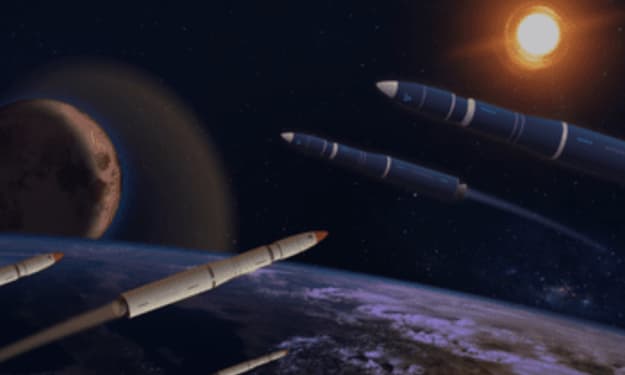What If The Planets Changed Positions?
Exploring the Cosmos: Imagining Planetary Position Shifts
Let's entertain a bold notion: what if we could rearrange the planets in our solar system? For billions of years, our cosmic neighborhood has settled into a familiar pattern, but what if we were to disrupt this order? Picture Jupiter orbiting close to the Sun, or Earth swapping places with Mars. Today, we'll explore two scenarios: arranging the planets from largest to smallest and then reversing that order. How would such changes impact Earth? Could we potentially discover a new planetary haven? Join us as we embark on a journey into the speculative realm of planetary rearrangement.
Let's begin with the audacious idea of sorting the planets from largest to smallest, starting with our radiant Sun. Jupiter, the behemoth of our solar system, would take Mercury's place, a shift that would drastically alter its current conditions. Jupiter, known for its massive size and gaseous composition, would experience a monumental transformation. Its orbit, which currently spans approximately 12 Earth years, would contract to just 90 days. This relocation would plunge Jupiter into extreme proximity to the Sun, resulting in scorching surface temperatures reaching around 167°C. Such temperatures would trigger unprecedented changes in Jupiter's atmosphere, potentially causing its iconic storms and turbulent belts to intensify. The moons of Jupiter, such as Ganymede, Callisto, and Europa, might briefly reveal subsurface oceans under the initial heat before evaporating into space.
Saturn, renowned for its stunning rings and icy moons, would then move into the orbit currently occupied by Venus. This relocation would subject Saturn to a significant temperature increase, shifting from its current average of -180°C to a relatively balmy 55°C. However, the intense heat and radiation from the nearby Sun would likely cause Saturn's majestic rings to dissipate over time. The interaction between Saturn's magnetic field and the Sun's powerful magnetosphere could generate novel magnetic phenomena, offering astronomers new insights into planetary magnetism and its interaction with stellar environments.
Continuing inward, Uranus would find itself in Earth's current orbit within the habitable zone of the solar system. Previously characterized by its frigid temperatures and icy composition, Uranus would experience a notable warming trend under these new orbital conditions. The increase in temperature could potentially thaw Uranus's icy exterior, revealing previously hidden layers and possibly fostering conditions conducive to liquid water and carbon-based molecules. However, the absence of a solid surface and the extremely high atmospheric pressure make Uranus an unlikely candidate to become a new Earth-like planet.
Following Uranus, Neptune would occupy the orbit currently held by Mars. Neptune, known for its striking blue coloration and powerful storms, would undergo a significant warming process from its current frigid temperatures of approximately -220°C. The increased solar energy received in its new orbit could intensify Neptune's atmospheric dynamics, leading to more frequent and violent storms across its surface.
However, the ambitious rearrangement of planets in this manner would not come without consequences. Placing four massive gas giants—Jupiter, Saturn, Uranus, and Neptune—relatively close to the Sun could destabilize the delicate gravitational equilibrium that currently governs our solar system. The gravitational interactions between these colossal bodies could lead to chaotic orbital behaviors, potentially ejecting smaller celestial objects or even altering Earth's orbit significantly. Such disruptions could jeopardize the conditions necessary for life as we know it on our planet, possibly subjecting Earth to extreme environmental conditions or altering its status to that of one of Neptune's moons.
In a reverse scenario, where planets are organized from smallest to largest, Mercury remains closest to the Sun, with Mars following suit. Mars, now occupying Earth's current orbit, would warm under increased solar radiation but likely lose its already tenuous atmosphere to solar winds, making it inhospitable to life as we understand it. Venus, despite cooling somewhat from its current state, would remain a hostile environment due to its thick atmosphere of carbon dioxide and the runaway greenhouse effect, rendering it unsuitable for sustaining life.
Earth, now positioned further from the Sun than its current location, would receive significantly reduced sunlight and heat. This change would lead to a substantial cooling effect, potentially causing global temperatures to plummet and severely limiting the conditions necessary to support complex life forms. The resulting climate shifts could disrupt ecosystems worldwide, posing significant challenges to the survival of existing species and potentially altering the planet's geological processes.
In conclusion, while the thought of rearranging planets within our solar system sparks intrigue and imagination, it underscores the delicate balance that has evolved over billions of years to sustain life on Earth. Earth's current position within the habitable zone, where conditions are conducive to liquid water and moderate temperatures, remains a critical factor in supporting the diversity of life forms that thrive on our planet. As we continue to explore and study the cosmos, these speculative exercises serve as valuable reminders of the unique conditions that make Earth a precious oasis in the vastness of space.
About the Creator
Enjoyed the story? Support the Creator.
Subscribe for free to receive all their stories in your feed. You could also pledge your support or give them a one-off tip, letting them know you appreciate their work.






Comments
There are no comments for this story
Be the first to respond and start the conversation.